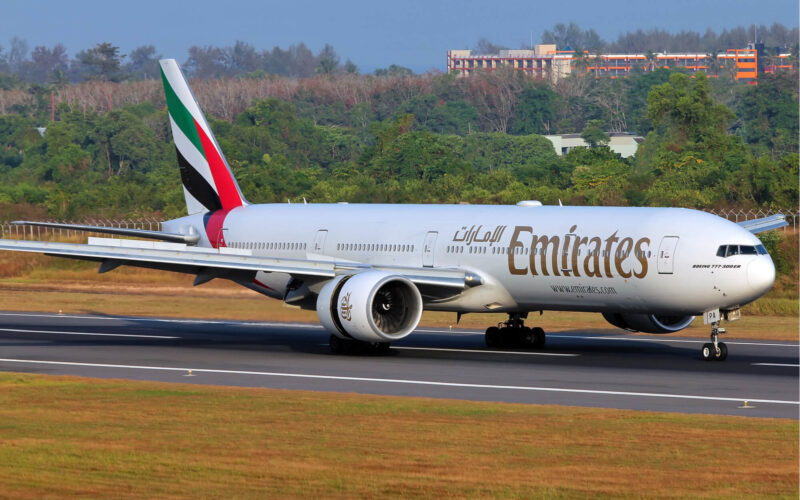Investigators have released a preliminary report into a potentially catastrophic incident where an Emirates Boeing 777-300ER failed to climb properly on take-off from Dubai International Airport (DXB).
The aircraft, registration A6-EQI, was carrying 372 people, including four flight crew and 14 cabin crew, when it departed DXB on December 19, 2021 for Washington Dulles (IAD) as flight EK231.
However, data from flight tracking services showed that instead of climbing promptly after take-off, the aircraft entered a shallow climb, and was at just 175 feet above the ground when passing a residential area beyond the end of the runway.
The incident has prompted much discussion online on over-reliance on automation and human factors, given there were two crews in the flight deck at the time and the flight was taking place during middle of the night.
In its preliminary report, the Air Accident Investigation Sector (AAIS) of the United Arab Emirates, describes the event as a “serious incident” and provides some initial details from the crew of the flight.
“The Commander stated that during cockpit preparation, she noticed that the altitude selector was set to 0000 feet, and she selected it to 4,000 feet, which was also verified by the flight data recorder,” the report states.
“The Commander stated that after lift-off, and during climb, she followed the flight director command,” the report continues.
The report notes that the aircraft reached a maximum rate of climb of only 800 feet per minute, which was below the climb gradient for the departure procedure.
The AAIS does not provide further details of the aircraft’s trajectory in the preliminary report but says information from the flight data recorder (FDR) will be analyzed in the final report.
Flight directors provide pilots with indications as to whether they should turn, climb or descend to maintain the route programmed into the onboard computers. The incident has raised questions as to why the captain continued to follow the flight directors, rather than put the aircraft into the usual nose-up attitude expected after take-off to climb away from the ground.
Altitude settings
Immediately following the incident, Emirates issued a memo about altitude settings on the mode control panel of the aircraft, indicating that the flight director system may engage in a different mode if the altitude window is set to airport elevation upon landing.
In the preliminary report, the commander says that this window was initially set to 0000 feet but that during cockpit preparation she changed it to 4000 feet, as per the planned departure procedure.
The preliminary report also confirms that the weather and visibility was good when the plane took off at 2310 UTC (0310 local time) and that no damage was found to the aircraft during an inspection at IAD.
Investigators are continuing their investigation. Final reports can take anywhere between one to two years after incidents.
The AAIS said the investigation will analyze human and organizational factors, plus provide “further examinations and analysis of:
The root cause of the shallow climb of the Aircraft and the crew performance.
The related procedures and the implementation.
Any other safety aspects that may arise during the course of this Investigation.”
The cockpit voice recorder has been recorded over, meaning communications between the crew in the flight deck at the time of the incident are not available. However, the investigators have data from the FDR, plus recordings of communications between the crew and air traffic control.
Representatives from Boeing and the US National Transportation Safety Board are also involved in the investigation.
As per ICAO definitions, a serious incident involves circumstances indicating that there was a high probability of an accident.
Read More: A close call? Emirates B777 incident on take-off from Dubai under investigation

